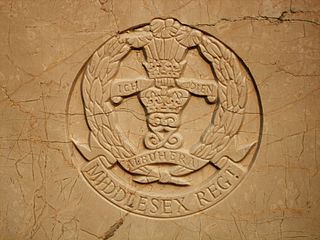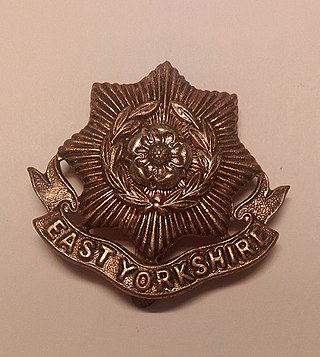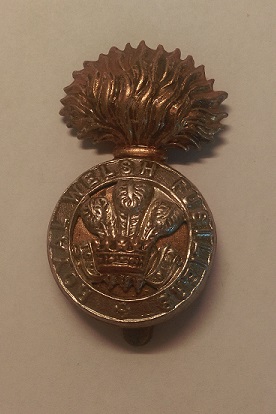Gallipoli
The 53rd (W) Division was destined as reinforcements for the Gallipoli Campaign. After sailing to Lemnos and then Imbros, the battalion landed on C Beach at Suvla Bay at about midnight on 8 August under the command of Lt-Col C.H. Pank. It began beach fatigues under shellfire before moving to the western slopes of Lala Baba at nightfall on 9 August. The landing had been chaotic, but 53rd (W) Division was ordered to attack the W Hills the following day to recover the position. The first phase of the attack, on Scimitar Hill, was to be carried out by 159th (Cheshire) Brigade, after which 158th (North Wales) Bde reinforced by 2/10th Middlesex from 160th Bde would pass through to attack the Anafarta Spur. 2/10th Middlesex set off at dawn across a salt lake to join the firing line at Chocolate Hill, with no cover and under heavy shelling, machine gun and rifle fire, and from Chocolate Hill the firing line was unable to advance to Scimitar Hill. A second attack was ordered for 16.30, but the only troops to advance were two companies of the 2/10th, who went forward about 500 yards (460 m) before discovering that they were unsupported and fell back, having lost further casualties. [12] [18] [24] [26] [27] [28] [29] [30]
The companies were gathered during the night and the battalion was moved a few hundred yards to its left, where it dug in until relieved on 13 August. It then returned to the beach and fatigue duties until the end of the month, under continual shellfire during daylight hours. [26] [31] [32] From then on the battalion endured spells in the front line alternating with digging positions in the rear. By the end of October it was reduced by battle casualties and sickness to about half of its pre-landing strength. In November the 2/10th Middlesex was reinforced by four officers and 200 men from the 9th Bn Sherwood Foresters in 11th (Northern) Division. The battalion was evacuated to Lemnos aboard the El Kahirah on 13 December. [12] [26]
Palestine
From Lemnos the 53rd Division was shipped to Alexandria, and began a long period of rest and recuperation guarding the Nile Valley in Egypt. When the Turkish Army attacked the Suez Canal defences in August 1916, leading to the Battle of Romani, only part of 53rd Division was actually engaged, but the 2/10th Middlesex was present and so was later awarded the battle honour for Rumani. [24] [33] [34]
The British opened the Sinai and Palestine Campaign in March 1917 when the Egyptian Expeditionary Force (EEF) advanced towards Gaza, with 53rd Division in the Desert Column. The 1st Battle of Gaza began at 03.30 on 26 March, when 160th Brigade started to cross Wadi Ghuzzee. Shortly afterwards, fog began to roll in from the sea, slowing the advance, but the attack began shortly after 11.45. By 13.30 the brigade had captured 'The Labyrinth', a maze of entrenched gardens, but 2/10th Middlesex's further advance was slowed up by four belts of barbed wire and at 15.30 it requested reinforcements and ammunition; two companies of 2/4th Queens (Royal West Surrey Regiment) arrived at 17.00. By 18.30 the whole position had been secured. But events had not gone so well elsewhere, and the brigade's advanced positions were still outflanked. At 19.00 the Middlesex's CO reported that unless reinforced, his position was untenable; nevertheless, he was ordered to consolidate. However 160th Bde was ordered to pull back at midnight, and by 04.30 on 27 March 2/10th Middlesex was back on its starting position behind Wadi Ghuzzee. The battalion's casualties amounted to four officers killed and five wounded, 14 other ranks (ORs) killed, 108 wounded and 22 missing. [35] [36] [37]
A second attempt to take Gaza began on 17 April, and the 53rd Division attacked in the second phase on 19 April. The objective for 160th Brigade was Samson Ridge, and 2/10th Bn set out at 07.15 towards the right hand Redoubt on the ridge. The attack proceeded slowly, held up by machine gun fire, the top eventually being taken at the point of the bayonet. However, the attack elsewhere failed, and the troops dug in at the end of the day. The battalion had lost 2 officers killed and 7 wounded, 35 ORs killed or died of wounds, 6 missing and 132 wounded. [38] [39] [40]
There followed a pause of several months while the EEF was reorganised. The 2/10th Bn's CO, Lt-Col V.L. Pearson, was promoted to command 160th Bde and was replaced by Major A.P. Hohler. The battalion participated in a number of raids, including the capture of Sugar Loaf Hill on 15 August. It was then withdrawn from the line for intensive training. On 24 October it returned to take up outpost positions before the 3rd Battle of Gaza opened on 31 October. This operation involved other formations outflanking the Gaza–Beersheba line, after which 2/10th Bn advanced its outposts on 1 and 2 November. 53rd Division was sent on 3 November to take the heights of Tel el Khuweilfe. 160th Brigade moved up a slight valley on the right, but found the enemy in strength, and holding the water supplies. The attack was renewed unsuccessfully the following day. The division kept up the pressure: on 6 November it fended off attack after attack on its advanced positions, quickly regaining them when pushed off; 2/10th Middlesex was in reserve for this action. Eventually the Turks were forced to evacuate the position after being outflanked elsewhere. 2/10th Battalion moved forwards to occupy the high ground during daylight on 13 and 14 November during the Action of El Mughar, for which it received the battle honour, though not actually engaged. [41] [42] [43]
By early December the EEF was working round Jerusalem with 53rd (W) Division advancing towards Bethlehem as flank guard. 2/10th Middlesex and 2/4th Queen's were ordered to capture the hills at Beit Jala on 8 December and advanced under shellfire that was so accurate that the Middlesex had to pass one road junction by rushes by small parties. But the two battalions found the objective unoccupied. Jerusalem fell the following day. [44] [45] On 21 December, 160th Brigade carried out a minor operation at Ras ez Zamby near Jericho. At 05.00 2/4th Queens captured a Turkish post, and the Turks fell back to 'White Hill'. A company of 2/10th Middlesex, together with one of 2/4th Queen's, then took this position after fierce close fighting with bombs, bayonets, and clubbed rifles. [46] [47] On 27 December the Turks made a strong counter-attack towards Jerusalem; although 2/4th Queen's withdrew from White Hill, its machine guns prevented the Turks from holding it in force, and 2/10th Middlesex recaptured Ras ez Zamby. Meanwhile, a detached company of 2/10th Bn successfully held the Monastery at Deir Obeid for 12 hours against a separate Turkish attack, despite two Turkish field guns being brought up to breach the walls. Shortly afterwards the Turkish attackers were dispersed by British artillery, who also silenced another artillery attack the following day. [48] [49]
160th Brigade was rested for the first 10 days of January 1918, but after returning to the front east of Jerusalem it carried out a small operation to advance the line on 18 January, with two platoons of D Company, 2/10th Middlesex, assisting 2/4th Bn Royal West Kent Regiment. The EEF began a new operation on 19 February with Jericho as its objective. 2/10th Middlesex moved out at 22.00 the previous night to secure a crossing over the Wadi Asa. When the attack began at 05.30 on 19 February, C Company launched the battalion's attack towards the village of Rammun, but was held up by a group of Turks with a machine gun. Two platoons of D Company were sent up as reinforcements, and the village and high ground as taken by 08.45. The battalion then held it during the day under heavy shellfire. The following night was quiet: patrols found no sign of the enemy, and on 21 February Jericho was occupied by the EEF. The 2/10th Bn then advanced its positions under cover of bad weather. It then spent the first part of March roadmaking while the EEF advanced methodically towards the River Jordan. [50] [51]
During the subsequent operations in the Judaean Hills, 53rd Division was ordered to capture Tell 'Asur. This led to further heavy fighting, with half of 2/10th Bn marching by night to drive off a Turkish counter-attack at 04.55 on 10 March. 160th Brigade forced its way steadily forward over broken ground on 11 March to reach the hills beyond. On 12 March C Company assisted 2/4th West Kents in an unsuccessful attempt to take an unreconnoitred position. [52] [53]
The EEF then prepared to cross the Jordan on 21 March. A platoon of 2/10th Middlesex with two machine guns was ordered to make a feint crossing at the Auja ford while 'Shea's Group' threw troops across at other points. While Shea's Group carried out its trans-Jordan raid, 2/10th Middlesex remained west of the river skirmishing against the Turkish cavalry screen on 29 and 30 March. Otherwise the battalion was engaged mainly in roadmaking. Further skirmishing occurred on 22 April, when the battalion pushed an outpost forwards to 'Round Hill', which overlooked the Jordan, on 2 May when C Company drive off an attack on 'Ide Hill', and on 22/23 May when A and B Companies carried out a night raid on 'Fife Knoll'. [54]
The summer saw the battalion alternating between holding the line and being in reserve. Lieutenant-Col Hohler left to command 160th Bde and Maj C. Jarrett assumed command. By now the EEF was suffering a manpower shortage, and on 19 August 1918 the 2/10 Bn left 160th Bde and moved back to El Qantara, Egypt, where it was broken up to provide drafts for other units. [6] [12] [13] [9] [22] [24] [55]













